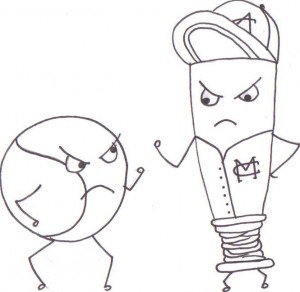This article is part of a PRO/CON opinion piece on Mira Costa’s athletic fields. To view the opposing side, see here.
By Kyle Allen
Opinion Editor

At its Feb. 2 meeting, the Manhattan Beach Unified school board finalized plans to establish yet another committee to review changes to the layout of Mira Costa’s athletic fields.
These changes were necessitated by the displacement of six tennis courts as a result of a new Measure BB parking lot. The new committee should adopt a plan similar to Plan B, a plan created in earlier steps of the decision process that serves the best interest of Mira Costa’s student-athletes.
The new committee may take into account the two plans suggested in recent months. Plan A was put forth by a task force composed of representatives of many athletic programs, and Plan B was suggested by district administrators.
These five different programs currently jostle for time on just two fields: Waller Stadium and a single multipurpose field. They must split time on these two fields while sports like baseball, softball and football each currently have multiple fields designated to their programs alone.
The addition of a multipurpose field would allow these sports more flexibility when scheduling games and practices, a great advantage to Costa student-athletes who currently stretch their schedules to practice and play at unreasonable times.
In addition, the creation of a second regulation-sized multipurpose field would allow the district to bring in revenue from more outside programs, like AYSO and club soccer and lacrosse teams. As a cash-strapped district, MBUSD should aim for all of the long-term revenue it can get.
These are programs that wouldn’t necessarily be able to rent and use an undersized field like the one proposed in Plan A.
The Manhattan Beach Athletic Foundation, which has offered to fund the renovations, says it would need to complete Plan B in phases due to its extra cost.
The board should choose to use more of MBAF’s money, even if it requires completing the project in phases, in order to maximize the district’s long-term revenue stream. Although Plan B costs more now, with another regulation-sized field, it has the potential to bring in more money for the district in the future than Plan A.
Many members of the baseball and softball programs have expressed concerns about the safety of Plan B. They say that the positioning of the two junior varsity baseball and softball diamonds would cause foul balls and long hits to land in each others’ fields, a serious safety concern during games and practices.
However, according to baseball coacoach Cassidy Olson, the program’s varsity and junior varsity teams currently practice together on one field, and its freshman team practices on city fields. This eliminates the immediate need for two baseball fields on Costa’s campus and nullifies the safety concern of the proximity of the two junior varsity fields.
Overall, Plan B provides the most long-term benefit to Costa students. It allows for more people to take advantage of our athletic facilities and balances the available field time among our athletic programs.
It would be a mistake for the board’s new committee to not adopt a plan very similar to the one already proposed by the district’s own administration.


Leave a Reply